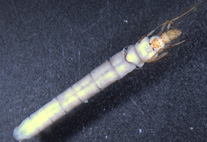Abstract
An examination of seven Antarctic brooding cucumariid and psolid holothurian species revealed a variety of characters all of them have in common: (1) All are gonochoric. (2) A genital papilla is present on the oral disc (permanent and digitiform in males). (3) Females brood their offspring in five anterior interradial brood pouches that are situated at the transition of body to introvert. (4) Multiple spermatozoa are always bundled to bunch-like spermato-zeugmata. (5) The spermatozoa have a fusiform head and a hollow cylinder-like mid-piece encircling the anterior end of the flagellum. This combination of characters so far is unique, and indicates a close relationship based on common origin. As a consequence, we unite all species sharing this set of synapomorphies in the genus Echinopsolus Gutt, 1990. The herewith included species are: E. acanthocola Gutt, 1990, E. acutus (Massin, 1992) comb. nov., E. charcoti (Vaney, 1906) comb. nov., E. koehleri (Vaney, 1914) comb. nov., E. mollis (Ludwig & Heding, 1935) comb. nov., E. parvipes Massin, 1992 and E. splendidus (Gutt, 1990) comb. nov.. Because the current assignment of Echinopsolus to the family Psolidae can not be retained, the genus is tranferred to the family Cucumariidae, as relationships to taxa within this family are obvious. The peculiar spermatozoa and spermato-zeugmata of all Echinopsolus species are described using light- and electron-microscopical techniques and the results are evaluated and discussed concerning their taxonomy and phylogeny.

